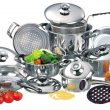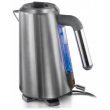What makes a coffee cost more than $100 per pound? Is it because the trees grow at an altitude that makes it difficult to bring the harvest down to processing sites? Is it political conflict?
Both of these possibilities seem logical, however, they really don’t apply to the world’s costliest caffeinated brew. The Black Ivory, a Thai coffee bean, recently took the dubious title of being the most expensive coffee in the world. What makes it cost $500 per pound? The beans must be refined within the digestive tract of elephants, and then collected from the dung, hence the product’s name.
Similarly, producers of Kopi Luwak Coffee, sometimes called civet, are able to charge approximately $160 per pound because a mongoose must first eat the fruit before it can be prepped for roasting.
Featured Product
Kopi Luwak 1lb / 456 Grams 100% Pure Wild & Organic Civet Coffee Medium Roasted Robusta Whole Beans. Imported from the Philippines Roasted Fresh in the USABantai Civet Coffees delivers four hermetically sealed bags of 100 percent wild and organic Kopi Luwak beans. They’ve been roasted in the United States to make sure you receive the freshest flavor. $168.95
Costly Coffees
If you’re not up for a cup of Joe that technically has already been digested by an exotic animal, but want to experience the rich taste of a really good brew, then check out these other expensive coffees.
Ospina
Approximate price per pound: $150
Country of origin: Colombia
Why it’s expensive: These beans flourish in the shade of the Andes Mountains at elevations between 5,000 and 7,000 feet.
Featured Product
Ospina Estate Coffee, Premier Grand Cru, Whole Beans, Deluxe Gift Box, Colombian Arabica Typica, Awarded World’s Best Coffee, French Press, Espresso, Coffee Beans, Colombian Coffee, Gourmet, Classic Roast, 12 ozThese Arabica beans received the Robb Reports “The Best of the Best Coffee” honor. Reviewers note hints of chocolate, chestnut or caramel in the French roast coffee.
$65
Hacienda La Esmeralda
Approximate price per pound: $100
Country of origin: Panama
Why it’s expensive: Grown in only one region of the world under the shade of old guava trees.
St. Helena Coffee Company’s Island
Approximate price per pound: $80
Country of origin: St. Helena Island
Why it’s expensive: The first grove of coffee trees on this tiny island in the Atlantic Ocean was rumored to be planted by no other than Napoleon Bonaparte when he was exiled there. Growers use only natural fertilizers and the beans are sundried for four months. However, it’s the extremely remote location that adds to the overall cost.
Fazenda Santa Ines
Approximate price per pound: $50
Country of origin: Brazil
Why it’s expensive: This brew is as old-school as it comes—absolutely, positively no automation allowed.
Blue Mountain
Approximate price per pound: $50
Country of origin: Jamaica
Why it’s expensive: These trees grow on the eastern side of the island’s Blue Mountains.
Roasted to Taste
Sometimes people associate cost with roast, such as the darker the roast, the more expensive. This isn’t always the case, and trying to differentiate between the various roasts available today can be confusing, especially because there are no industry standards.
That said, here are a few general guidelines:
• Light Roast
Beans are generally light brown in color and have no visible oiliness to them.
• Medium Roast
A slightly darker brown, these beans still do not present any surface oils.
• Medium-Dark Roast
Not quite dark black yet, but the beans definitely have a much darker brown color to them. Also, there’s some evidence of oil breaking through.
• Dark Roast
These beans have a deep black tone and consistent oily surface.










